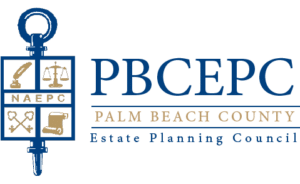 In the Harold Ramis-directed 1980 sports comedy, Caddyshack, a wealthy golf sage named Ty Webb (played by Chevy Chase) traverses the fairways of Bushwood Country Club alongside his down-on-his luck, high school-aged caddy, Danny Noonan.
In the Harold Ramis-directed 1980 sports comedy, Caddyshack, a wealthy golf sage named Ty Webb (played by Chevy Chase) traverses the fairways of Bushwood Country Club alongside his down-on-his luck, high school-aged caddy, Danny Noonan.
At the behest of Ty, a blindfolded Danny grabs a golf club and positions himself over the ball to hit an impromptu shot…all while Ty whispers encouragingly, “Just relax…find your center… let it happen and be the ball.”
As you might have guessed, Danny heeds none of Ty’s advice and proceeds to duff his iron shot directly into the greenside pond, or as Ty states “right into the lumberyard”.
What lessons or “true-isms” can we learn from Ty Webb’s Caddyshack anecdote…aside from the fact that golf is a supremely difficult game to master – let alone while wearing a blindfold?
When it comes to your own financial planning – we believe that “Being the ball” means focusing on the fundamentals, including controlling what you can control in today’s increasingly-complex income, gift, and estate tax world.
As one example, due to historically low interest rates, many clients are pivoting their portfolios into private credit investments, which can provide an alternative to the minimal returns offered through traditional fixed income. Yield oriented or “yield like” strategies including trade finance, specialty lending, bank regulatory capital transactions, aircraft leasing, life settlements, and other niche strategies can help to deliver ample real returns to client balance sheets. The downside to these investments is that they are often taxed at ordinary income tax rates, which can put a significant dent in the client’s net “after-tax” returns. For a high income earning resident in Florida, that could represent a 40%+ drag on investment returns (factoring in the 37.0% Federal rate and 3.8% Net Investment Income Tax rates). If the client lives in New York City (subject to an additional 12.7% in state and local taxes), that investment return could be cut in half!
One strategy for clients of significant wealth to consider is to fund a portion of their investable assets into a properly structured Private Placement Life Insurance (“PPLI”) or Private Placement Variable Annuity (“PPVA”) contract. Investments made within the structure qualify for long-term tax deferral for the remainder of the client’s lifetime, as well as potential tax elimination (and income tax-free payout upon death) if structured properly as PPLI. Suffice to say, the potential wealth compounding arbitrage, or “structural alpha” provided by these structures over several decades can be enormous vs. making a similar traditional or “taxable” investment. In essence, what an individual is doing is trading taxes for insurance fees on investment dollars.
We note – while PPLI and PPVA qualify as variable life insurance and annuities under the Internal Revenue Code, they bear little resemblance to other traditional or retail insurance and annuity products. Priced on an institutional or “wholesale” basis, PPLI and PPVA fee schedules are fully transparent and disclosed to the client upfront. For larger cases, economics are often negotiated directly with the carrier.
These solutions allow for tremendous flexibility in how the underlying policy assets can be managed. Individuals can either select investments from the insurance carrier investment lineup/platform, which may include approximately 100+ Insurance Dedicated Funds (hedge funds) or 200+ Variable Insurance Trusts (mutual funds), or the client’s advisor can construct a custom, bespoke portfolio specific to that client within the policy, and in accordance with a more broad investment mandate agreed to in advance. Representative investments may include traditional equities / fixed income, mutual funds, hedge funds, private credit, private equity, co-investments, direct deals, or other opportunistic strategies.
Further, these products are offered via an institutional marketplace represented by a handful of globally recognized carriers, including Prudential, Zurich, Crown Global, and Lombard International (the latter of which is owned by Blackstone).
Additionally, these contracts are considered asset-protected in many state jurisdictions, and are segregated from the general assets and liabilities of the insurance carrier in the event of insurer bankruptcy.
Finally, for more sophisticated families (i.e. Family Offices), these structures can be designed so that fees and expenses associated with the contract (including portions of both the insurance product fees as well as investment management fees) can be deducted separately through the client’s management company or “Virtual Family Office” structure.
Why does this carry significance today? As a result of Covid-19, governments at a local, state, and Federal level are likely to raise tax rates to meet the inevitable rise in government expenditures, as well as anticipated shortfalls in revenue during the economic downturn. These structures can help ensure that your assets remain protected and compound in a tax-deferred (PPVA) or tax-eliminated (PPLI) asset location during the remainder of your lifetime. Ultimately, they can help to maximize the pool of assets that inure to the causes and individuals most important to you.
We suggest you consider taking a page from Ty Webb and “Be the ball” with PPLI and PPVA. After all, it’s better than landing in the “lumberyard!”
Jarrett Bostwick, JD, LLM, is Partner, General Counsel, and Co-Founder of Spearhead. David Reynolds, CFP®, CLU®, is Director of Business Development. Spearhead is a privately held financial services firm exclusively focused on providing premier wealth management and administration solutions to ultra-high net worth investors, family offices, and private placement markets.
